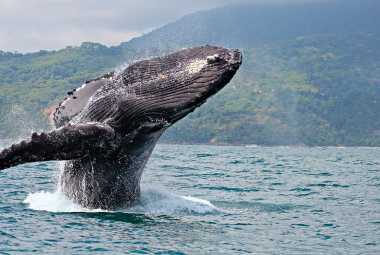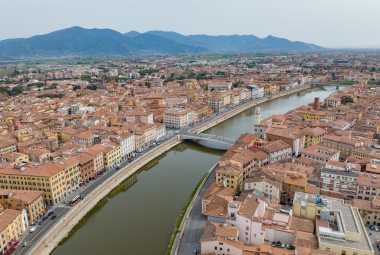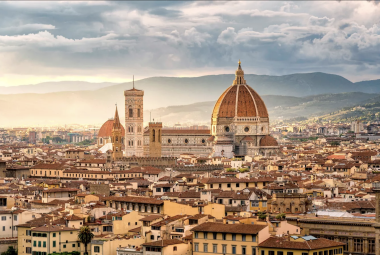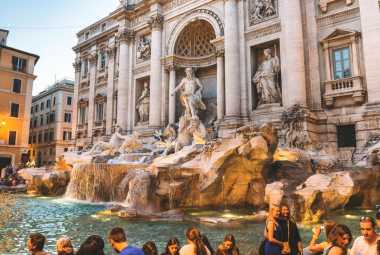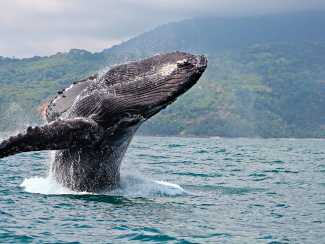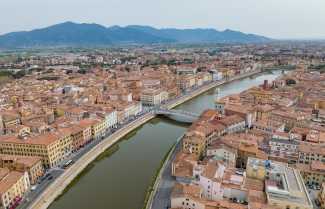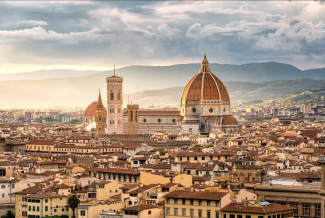Image by CNN.com
*Vacation Mode is a for-profit site. It contains paid banner advertisements that are generated and managed by a third-party network. This site also includes relevant affiliate links (both in the content and on the sidebar) all of which we do our best to clearly mark as such.
Do you dream of embarking on an adventure to a vibrant and culturally rich country? Well, look no further than Mexico or Peru! These two Latin American destinations offer an array of captivating experiences, from ancient ruins and mouth-watering cuisine to lively festivals and stunning landscapes. Let us delve into the wonders of Mexico or Peru and see why it's a must-visit for you.
Geographical Differences between Mexico and Peru
When it comes to South American countries, Mexico and Peru are two popular destinations that often come to mind. While they may seem similar in some aspects, the geographical differences between these two countries are quite significant. In this section, we will explore the distinct differences in location and size, climate, and landscape that make Mexico and Peru unique from each other. By the end, you will have a better understanding of the geographical characteristics that make these countries stand out.
1. Location and Size
Mexico and Peru are two distinct countries with unique characteristics, particularly when it comes to their location and size. Consider the following:
- Location: Mexico, situated in North America, shares borders with the United States, Belize, and Guatemala. On the other hand, Peru is located in South America and is bordered by Ecuador, Colombia, Brazil, Bolivia, and Chile.
- Size: Mexico is the larger of the two countries, covering approximately 1.96 million square kilometers. In comparison, Peru is still sizable but smaller, with an area of around 1.28 million square kilometers.
These differences in location and size contribute to the unique cultural, historical, and natural attractions found in each country.
Mexico has a rich history dating back thousands of years, with its indigenous civilizations shaping its identity. From the ancient Mayans and Aztecs to the Spanish conquest and subsequent independence, Mexico's history is a diverse tapestry of cultures and influences. Similarly, Peru boasts a fascinating history, including its impressive Inca Empire and the arrival of Spanish colonizers. Both countries have preserved their historical sites, allowing visitors to immerse themselves in the stories of their past.
2. Climate
Mexico and Peru have diverse climates due to their geographical locations. In Mexico, the climate ranges from arid in the north to tropical in the south. The coastal regions are characterized by high humidity, while the central plateau has a more moderate climate. The Yucatan Peninsula is renowned for its hot and humid weather.
Peru, on the other hand, experiences a variety of climates due to its varied topography. The coastal region is dry, while the Andes mountains have cooler temperatures. The Amazon rainforest in eastern Peru has a tropical climate with heavy rainfall. These climate differences contribute to the distinct ecosystems and biodiversity found in both countries.
3. Landscape
The landscape in Mexico and Peru offers diverse natural beauty and geographical features. Consider the following aspects when comparing the landscapes of these two countries:
- Location and Size: Mexico is located in North America, while Peru is in South America. Mexico is home to a variety of landscapes, from desert regions to tropical rainforests, while Peru boasts the majestic Andes Mountains and the Amazon rainforest.
- Climate: Mexico has a range of climates, including tropical, arid, and temperate. Similarly, Peru has a diverse climate, with coastal deserts, highland plateaus, and tropical rainforests.
- Landforms: Mexico boasts stunning landscapes such as the Copper Canyon, the Yucatan Peninsula, and the Baja California Peninsula. Peru is known for its breathtaking landscapes, including the Sacred Valley, Lake Titicaca, and the Nazca Lines.
These countries offer unique landscapes that cater to different interests and preferences. Whether you seek desert views, lush rainforests, or picturesque mountains, both Mexico and Peru have something to offer.
10 Best Places to Visit in Mexico
Video by Touropia
10 Best Places to Visit in Peru
Video by Touropia
Cultural Differences between Mexico and Peru
Mexico and Peru are two vibrant and culturally rich countries in Latin America, both with a long and complex history. While they share some similarities, they also have distinct differences that make each country unique. In this section, we will explore the cultural differences between Mexico and Peru, examining their histories, languages, and traditions. By gaining a deeper understanding of these two fascinating cultures, we can appreciate the beauty and diversity of Latin America.
1. History and Influences
The historical and cultural influences of Mexico and Peru have shaped their unique identities. Here are some key steps to understanding their significance:
- Explore ancient civilizations: Visit archaeological sites such as Chichen Itza in Mexico and Machu Picchu in Peru to witness the architectural marvels left behind by the Mayans and Incas.
- Discover colonial heritage: Learn about the Spanish conquest of both countries and its lasting impact on their language, religion, and architecture.
- Appreciate indigenous cultures: Delve into the rich traditions and customs of indigenous communities, such as the Zapotec in Mexico and the Quechua in Peru.
Pro-tip: Immerse yourself in the local history by attending cultural festivals and museums, where you can witness the legacy of Mexico and Peru firsthand.
2. Language and Ethnicity
When comparing Mexico and Peru in terms of language and ethnicity, there are distinct differences to consider:
- Language: In Mexico, the official language is Spanish, with numerous indigenous languages also spoken. In Peru, the official languages are Spanish, Quechua, and Aymara, along with various indigenous languages.
- Ethnicity: Mexico has a diverse population with a majority of Mestizos (mixed Indigenous and European ancestry), followed by Indigenous, European, and Afro-Mexican populations. Peru has a similar mix of Indigenous, Mestizo, and Afro-Peruvian populations.
3. Traditions and Customs
When comparing the traditions and customs of Mexico and Peru, it's important to explore the rich cultural heritage of both countries. Here are some key steps to understand their unique traditions:
- Research the historical background and influences on their traditions and customs.
- Study the languages spoken and ethnic diversity within each country.
- Learn about the traditional festivals, celebrations, and rituals that hold significance to the people.
To fully immerse yourself in the cultural experience, consider participating in local festivities, visiting traditional markets, or trying authentic cuisine. Embrace the warmth and hospitality of the people to truly appreciate the traditions and customs of Mexico and Peru.
Tourist Attractions in Mexico and Peru

When it comes to traveling to Latin America, Mexico and Peru are two popular destinations that offer a diverse range of experiences. In this section, we will explore the various tourist attractions in both countries, highlighting their unique features and must-see destinations. From natural wonders to historical sites, culinary experiences to trade and exports, and tourism trends, Mexico and Peru have something for every type of traveler. So let's delve into the top attractions in these two vibrant and culturally-rich countries.
1. Natural Wonders
- Chichen Itza: Explore the ancient Mayan ruins of Chichen Itza, including the iconic El Castillo pyramid.
- Machu Picchu: Visit the breathtaking Incan city of Machu Picchu, nestled high in the Andes Mountains.
- Cenotes: Take a dip in the crystal-clear cenotes of Mexico's Yucatan Peninsula, unique natural sinkholes formed by underground rivers.
- The Amazon Rainforest: Immerse yourself in the biodiversity of the Amazon Rainforest, home to countless species of plants and animals.
- The Copper Canyon: Marvel at the stunning landscapes of Mexico's Copper Canyon, a series of interconnected canyons larger and deeper than the Grand Canyon.
In Mexico and Peru, you can witness the wonders of nature that have captivated travelers for centuries. From ancient ruins to majestic mountains, these countries offer an abundance of natural marvels to explore.
2. Historical Sites
When exploring historical sites in Mexico and Peru, consider the following steps:
- Research: Learn about the history, significance, and cultural context of each site.
- Create an itinerary: Plan your visit, considering travel time, accessibility, and entrance fees.
- Guided tours: Opt for guided tours to enhance your understanding of the must-visit historical sites.
- Must-visit sites: In Mexico, be sure to visit Chichen Itza and Teotihuacan. In Peru, don't miss out on exploring Machu Picchu and the Nazca Lines.
- Preservation: Respect the sites by following the rules and regulations, and avoid damaging or removing any artifacts.
True story: While visiting Machu Picchu, I was captivated by the ancient ruins and the breathtaking view. The guide shared fascinating historical facts, making the experience even more enriching and unforgettable.
3. Culinary Experiences
When exploring the culinary experiences in Mexico and Peru, you can indulge in a variety of mouthwatering dishes that showcase the unique flavors and traditions of each country.
- Try Mexican cuisine:
- Taste traditional tacos filled with succulent meats like carnitas or al pastor.
- Sample authentic Mexican street food such as tamales or elotes.
- Indulge in spicy and flavorful dishes like mole or chiles en nogada.
- Experience Peruvian delicacies:
- Savor the popular dish ceviche, made with fresh fish or seafood marinated in tangy citrus juices.
- Enjoy the hearty and flavorful Peruvian staple, lomo saltado, which combines beef, onions, tomatoes, and fries.
- Discover the unique flavors of Peruvian fusion cuisine, influenced by Japanese, Chinese, and African culinary traditions.
- Don't miss out on trying regional specialties in both countries, such as Oaxacan mole in Mexico or Cuy (guinea pig) in Peru.
Major Industries
Mexico and Peru are both home to a diverse range of major industries that greatly contribute to their respective economies.
- In Mexico, these industries include manufacturing (particularly automobiles, electronics, and textiles), petroleum and oil, tourism, and agriculture (such as corn, beans, and avocados).
- In Peru, major industries include mining (gold, silver, copper, and zinc), agriculture (such as coffee, grapes, and potatoes), fisheries, textiles, and tourism.
These industries are vital for the economic growth and creation of employment opportunities in both countries.
2. Trade and Exports
When it comes to trade and exports, both Mexico and Peru have thriving economies. Here are a few steps to understand their trade dynamics:
- Identify key industries: Mexico focuses on manufacturing, automotive, and electronics, while Peru specializes in mining, agriculture, and textiles.
- Assess trading partners: Mexico has strong trade ties with the United States, China, and Canada, while Peru's major trading partners include China, the United States, and the European Union.
- Analyze exports: Mexico exports a wide range of goods, including automobiles, machinery, and electrical equipment. Peru's exports consist of minerals, agricultural products, and textiles.
- Consider trade agreements: Mexico has a deep network of free trade agreements, such as NAFTA and the USMCA. Peru has trade agreements with countries like China and the European Union.
Fun Fact: Mexico is the world's 11th largest exporter, while Peru is known for being the largest producer of silver globally.
3. Tourism
When it comes to tourism in Mexico and Peru, there are several steps you can take to make the most of your trip.
- Explore Natural Wonders: Visit Mexico's stunning beaches like Cancun or explore Peru's iconic Machu Picchu.
- Discover Historical Sites: Immerse yourself in Mexico's rich Mayan history at Chichen Itza or explore the ancient ruins of Peru's Sacred Valley.
- Indulge in Culinary Experiences: Sample Mexico's vibrant street food scene or savor traditional Peruvian dishes like ceviche or lomo saltado.
For an unforgettable trip, consider combining the scenic beauty of Mexico's beaches with the historical and cultural richness of Peru.
Living Standards in Mexico and Peru

When considering a move to a new country, it is important to research and compare the living standards of different places. In this section, we will take a closer look at the living standards in Mexico and Peru. We will examine the cost of living in each country, including housing, food, and transportation expenses. We will also explore the healthcare systems in both countries and the quality of education available. By understanding these key factors, we can gain a better understanding of the overall living standards in Mexico and Peru.
1. Cost of Living
When considering the cost of living in Mexico and Peru, it's important to take into account factors such as housing, transportation, food, and healthcare.
- Housing: Research rental and housing prices in different cities or regions to compare costs.
- Transportation: Evaluate the cost of public transportation, fuel, and vehicle expenses.
- Food: Compare the prices of groceries, eating out, and local markets.
- Healthcare: Research the cost of health insurance, medical treatments, and medications.
Ultimately, the cost of living will vary depending on individual preferences and lifestyle choices. It's advisable to create a budget and consider personal financial circumstances before making a decision.
2. Healthcare System
Access to healthcare is a crucial aspect to consider when comparing Mexico and Peru. While both countries have made efforts to improve their healthcare systems, there are notable differences between them.
In Mexico, the healthcare system consists of a mix of public and private services, with the Seguro Popular program specifically catering to the uninsured population.
On the other hand, Peru's healthcare system is primarily public, with the Ministry of Health responsible for overseeing healthcare delivery. However, both countries face challenges in terms of healthcare infrastructure and access to quality care, particularly in rural areas.
It is highly recommended to have travel insurance and be aware of the available medical facilities when visiting either country.
3. Education System
The education systems in Mexico and Peru have some similarities but also key differences. In Mexico, education is mandatory from ages 6 to 14, with free public schooling available. The system encompasses preschool, primary, and secondary education, followed by higher education. Peru also has mandatory education from ages 6 to 16, with public schools being the primary option. However, both countries face challenges such as overcrowded classrooms and limited resources, which can affect the quality of education. Efforts are being made to improve the education systems and provide equal opportunities for all students.
One significant milestone in the education system of Peru was the implementation of educational reforms by President Fernando Belaunde Terry in the 1960s. These reforms aimed to modernize and expand access to education, with a particular focus on rural areas. The reforms led to the establishment of more schools, improvement of teacher training programs, and promotion of bilingual education. Although challenges still exist, these reforms have made a lasting impact on the education system in Peru.
Frequently Asked Questions
What are the main differences between Mexico and Peru?
Mexico and Peru are two distinct countries with unique cultures, landscapes, and histories. While both are located in Latin America, they have different languages, cuisines, and customs. Mexico is known for its vibrant cities, while Peru is known for its breathtaking natural scenery. Additionally, Mexico has a strong influence from Spanish and indigenous cultures, while Peru has a mix of Spanish, indigenous, and Incan influences.
Which country has a richer history and cultural heritage - Mexico or Peru?
Both Mexico and Peru have rich histories and diverse cultural heritages that are worth exploring. Mexico has a long and complex history, with influences from the Aztecs, Mayans, and Spanish colonizers. Peru, on the other hand, is home to the ancient Incan civilization and has a strong indigenous culture that is still prevalent today. Ultimately, the richness of each country's history and culture is subjective and depends on personal interests.
What are some must-see attractions in Mexico and Peru?
Mexico and Peru have countless attractions that are worth visiting. In Mexico, some must-see attractions include the ancient ruins of Teotihuacan, the vibrant city of Mexico City, and the beautiful beaches of Cancun. In Peru, popular attractions include the iconic Machu Picchu, the historic city of Cusco, and the stunning Amazon rainforest. Both countries offer a mix of cultural, historical, and natural attractions that are sure to captivate visitors.
Which country is a better destination for food lovers - Mexico or Peru?
Both Mexico and Peru are known for their delicious cuisines, making it a tough decision for food lovers. Mexico is famous for its spicy and flavorful dishes such as tacos, enchiladas, and mole. Peru, on the other hand, is known for its fusion of Spanish, indigenous, and Incan flavors, resulting in dishes like ceviche, lomo saltado, and aji de gallina. Both countries have a diverse range of dishes and culinary traditions that will satisfy any food lover's palate.
What is the best time of the year to visit Mexico and Peru?
The best time to visit Mexico and Peru depends on personal preferences and travel plans. Mexico is a year-round destination, with warm weather and sunny days throughout most of the country. However, the rainy season runs from May to October, which may affect outdoor activities. Peru has two distinct seasons - the dry season from May to October and the wet season from November to April. The dry season is the best time to visit for outdoor activities, while the wet season is best for visiting the Amazon rainforest.
Which country is more budget-friendly - Mexico or Peru?
Both Mexico and Peru are relatively budget-friendly destinations, with affordable accommodations, food, and transportation options. However, the cost of travel can vary depending on the specific cities and activities you choose. In general, Peru may be slightly more budget-friendly due to the lower cost of living, but both countries offer a range of options for travelers on a budget.
Things to do in Mexico
Things to do in Peru


